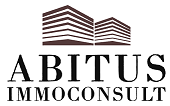
Introduction
The construction industry is a key segment of economic development in the Republic of Croatia. Monitoring its growth and dynamics enables a better understanding of market trends and investment potential. This article analyzes the growth index of the construction industry based on several indicators from 2021 to 2025, with a particular focus on the number of issued building permits and profit growth. The calculated index, amounting to 0.15747 (or approximately 15.75%), reflects a positive trend that may encourage further investments and the planning of infrastructure projects. The construction sector’s profit margin index increased by 54.8% compared to the 2021 baseline.
Keywords: Business Management, Construction industry, growth index, quantitative analysis, Croatia, market trends
Methodology
The data used in this analysis includes a set of indicators (Web | Croatian Bureau of Statistics, n.d.) for four consecutive years (2021–2024) and a calculated index projected for 2025. The indicators measured include:
- Aggregated values expressed in thousands of euros (e.g., total construction cost, apartment price)
- Number of building permits (as an indicator of new project volume in the industry)
The data was analyzed using chain and base indices (with 2021 as the reference year, set at 100) to obtain a comprehensive view of changes over the observed period. The growth index was calculated based on the relative change between consecutive periods, and the summarized results allowed for the calculation of the total growth index for 2025.
Results
| 2021. | 2022. | 2023. | 2024. | 2025 Indeks 15,75% (proj.) |
| 7.811 | 8.625 | 8.769 | 9.005 | 9.229 |
| Year | 2021 | 2022 | 2023 | 2024 | 2025 (proj.) |
| Average price per m² (€) | 1,837 | 2,237 | 2,342 | 2,571 | 2,891.45 |
| Chain indices | — | 121.7 | 104.7 | 109.8 | — |
| Ø 2021 = 100 | 100 | 121.7 | 127.5 | 139.9 | 157.4 |
Key Insights:
- The average apartment price per m² rose from €1,837 (2021) to €2,891 (projected for 2025).
- This represents a total increase of 57.4% compared to 2021.
- The average annual growth is relatively stable, ranging between 4% and 10%, except for the notable jump from 2021 to 2022.
- Prices are rising faster than inflation, suggesting strong demand and potential overheating of the market.
| Year | 2021 | 2022 | 2023 | 2024 | 2025 (proj.) |
| Cost per m² (€) | 1,107 | 1,355 | 1,409 | 1,536 | 1,712.23 |
| Amount (HRK ‘000) | 8,340 | 10,207 | 10,616 | — | — |
| Chain indices | — | 122.4 | 104 | 109 | — |
| Ø 2021 = 100 | 100 | 122.4 | 127.3 | 138.8 | 154.8 |
Key Insights:
- Construction costs per m² increased from €1,107 (2021) to €1,712 (2025).
- The total increase is 54.8%, closely mirroring the rise in selling prices.
- This suggests that contractor profit margins have remained relatively stable – the sector is neither earning extreme profits nor incurring losses.
- The largest growth was in 2022, likely due to material cost spikes and inflation; later years showed more moderate increases.
| Element | 2021 | 2025 (proj.) | Total Growth (%) |
| Market price per m² | €1,837 | €2,891 | +57.4% |
| Construction cost per m² | €1,107 | €1,712 | +54.8% |
| Margin (difference) | €730 | €1,179 | +61.4% |
The data indicates that contractor profits per unit are increasing, yet aligned with broader price and cost movements.
Discussion
The findings point to a generalized growth trend in Croatia’s construction industry. Increases in aggregated economic indicators and a moderate rise in building permits suggest the industry is expanding despite potential market fluctuations.
The use of chain indices enabled year-over-year tracking, while base index analysis (2021 = 100) provided insight into long-term trends. The calculated 2025 growth index of 0.15747 (or 15.75%) may reflect improvements in macroeconomic conditions, increased demand for new projects, and potentially supportive regulatory changes.
These findings serve as a useful baseline for further research and a valuable reference for investors and policymakers when planning future developments and resource allocations. Despite limitations tied to the specificity of collected data, the analysis confirms the importance of tracking dynamic changes in the construction sector.
Conclusion
This growth index analysis of Croatia’s construction industry (2021–2025) reveals upward trends across multiple indicators, particularly in building permits issued and profit margins. Using chain and base indices allowed for a comprehensive picture of market dynamics, while the calculated 2025 index (0.15747) signals healthy sectoral growth. Future research should focus on the influence of macroeconomic and regulatory factors on the sector’s long-term stability and sustainability.
Reference
Web | Croatian Bureau of Statistics. (n.d.). Retrieved June 17, 2025, from https://podaci.dzs.hr/hr/
